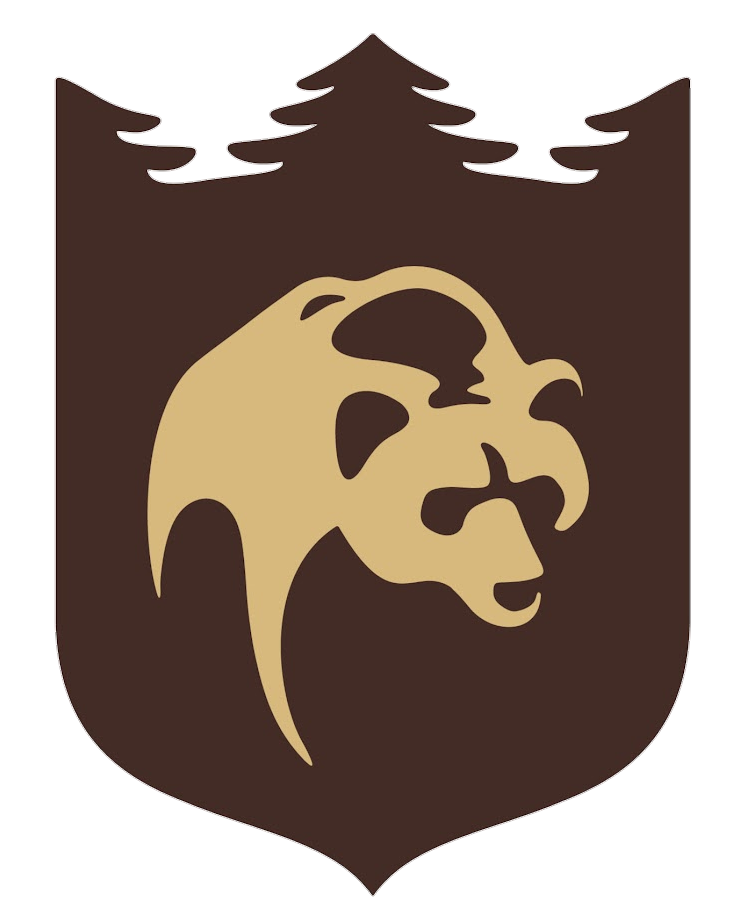SAFETY
Hazards on routes and safety rules
Ecotourism is an active type of recreation. The routes pass along forest paths, the coast, a dirt road, so you need to have comfortable clothes and shoes.
It is not recommended to travel along the routes for persons requiring constant medical supervision, with complex diseases.
As a result of careless travel along the route, you can get serious injuries. To reduce the risk of injury, it is necessary to be extremely attentive to the recommendations of the guides regarding behavior in dangerous places (slippery path, cliff, rockfall).
To avoid poisoning and other troubles, do not taste plants, fruit and mushrooms, do not touch thorny bushes and poisonous plants with your hands, do not drink water from open reservoirs.
It is not recommended to travel along the routes for persons requiring constant medical supervision, with complex diseases.
As a result of careless travel along the route, you can get serious injuries. To reduce the risk of injury, it is necessary to be extremely attentive to the recommendations of the guides regarding behavior in dangerous places (slippery path, cliff, rockfall).
To avoid poisoning and other troubles, do not taste plants, fruit and mushrooms, do not touch thorny bushes and poisonous plants with your hands, do not drink water from open reservoirs.
Hazards on routes and safety rules
Ecotourism is an active type of recreation. The routes pass along forest paths, the coast, a dirt road, so you need to have comfortable clothes and shoes.
It is not recommended to travel along the routes for persons requiring constant medical supervision, with complex diseases.
As a result of careless travel along the route, you can get serious injuries. To reduce the risk of injury, it is necessary to be extremely attentive to the recommendations of the guides regarding behavior in dangerous places (slippery path, cliff, rockfall).
To avoid poisoning and other troubles, do not taste plants, fruit and mushrooms, do not touch thorny bushes and poisonous plants with your hands, do not drink water from open reservoirs.
It is not recommended to travel along the routes for persons requiring constant medical supervision, with complex diseases.
As a result of careless travel along the route, you can get serious injuries. To reduce the risk of injury, it is necessary to be extremely attentive to the recommendations of the guides regarding behavior in dangerous places (slippery path, cliff, rockfall).
To avoid poisoning and other troubles, do not taste plants, fruit and mushrooms, do not touch thorny bushes and poisonous plants with your hands, do not drink water from open reservoirs.
Blood-sucking insects
Use repellents to protect against hard ticks and other blood-sucking insects (mosquitoes, midges, horseflies).
The best protection against ticks is taking precautions:
do not go into the impenetrable thickets of undersized bushes;
legs must be completely covered with clothing;
tuck trousers, pants (preferably with a smooth surface) into socks;
be sure to wear a hat (cap, scarf).
The best protection against ticks is taking precautions:
do not go into the impenetrable thickets of undersized bushes;
legs must be completely covered with clothing;
tuck trousers, pants (preferably with a smooth surface) into socks;
be sure to wear a hat (cap, scarf).
Blood-sucking insects
Use repellents to protect against hard ticks and other blood-sucking insects (mosquitoes, midges, horseflies).
The best protection against ticks is taking precautions:
do not go into the impenetrable thickets of undersized bushes;
legs must be completely covered with clothing;
tuck trousers, pants (preferably with a smooth surface) into socks;
be sure to wear a hat (cap, scarf).
The best protection against ticks is taking precautions:
do not go into the impenetrable thickets of undersized bushes;
legs must be completely covered with clothing;
tuck trousers, pants (preferably with a smooth surface) into socks;
be sure to wear a hat (cap, scarf).
Snakes
Keep calm when meeting snakes, they are not poisonous. Kunashir is inhabited by 3 species of eastern racers (Euprepiophis conspicillata, Elaphe climacophora, Elaphe quadrivirgata), all of them are in Red Books and protected by the nature reserve. Eastern racers can often be seen near thermal springs, on the coast of the Sea of Okhotsk warmed by the sun.
Snakes
Keep calm when meeting snakes, they are not poisonous. Kunashir is inhabited by 3 species of eastern racers (Euprepiophis conspicillata, Elaphe climacophora, Elaphe quadrivirgata), all of them are in Red Books and protected by the nature reserve. Eastern racers can often be seen near thermal springs, on the coast of the Sea of Okhotsk warmed by the sun.
Snakes
Keep calm when meeting snakes, they are not poisonous. Kunashir is inhabited by 3 species of eastern racers (Euprepiophis conspicillata, Elaphe climacophora, Elaphe quadrivirgata), all of them are in Red Books and protected by the nature reserve. Eastern racers can often be seen near thermal springs, on the coast of the Sea of Okhotsk warmed by the sun.
Bears
The brown bear is the largest predator of Kunashir Island. When meeting a bear, do not turn your back on it. You need to slowly move back, not look into his eyes. When driving on tall grass, make a noise (use whistles) — this will warn the bear about your approach. As a last resort, use a means of repelling the bear (flare, pepper spray) or climb a tree and wait until the bear loses interest in you and leaves.
If you see cubs, leave immediately, meeting a bear is always dangerous!
If you see cubs, leave immediately, meeting a bear is always dangerous!
Bears
The brown bear is the largest predator of Kunashir Island. When meeting a bear, do not turn your back on it. You need to slowly move back, not look into his eyes. When driving on tall grass, make a noise (use whistles) — this will warn the bear about your approach. As a last resort, use a means of repelling the bear (flare, pepper spray) or climb a tree and wait until the bear loses interest in you and leaves.
If you see cubs, leave immediately, meeting a bear is always dangerous!
If you see cubs, leave immediately, meeting a bear is always dangerous!
Poisonous plants
To avoid allergic reactions to Toxicodendron orientale, if possible, do not approach it closer than 1 metre and do not touch the plant with your hands.
Poisonous plants
To avoid allergic reactions to Toxicodendron orientale, if possible, do not approach it closer than 1 metre and do not touch the plant with your hands.
Volcanic gases and thermal springs
To avoid toxicological poisoning, do not stay for a long time in places where volcanic gases and hydrothermal vents come out, do not make parking or lodging in these places, do not make fires, do not use water from mineralized springs for drinking and cooking.
Volcanic gases and thermal springs
To avoid toxicological poisoning, do not stay for a long time in places where volcanic gases and hydrothermal vents come out, do not make parking or lodging in these places, do not make fires, do not use water from mineralized springs for drinking and cooking.
Safety rules
To avoid ultraviolet radiation and overheating, use personal protective equipment: creams, clothing that covers hands and feet, hats, sunglasses. On a hot day, you need to have a supply of drinking water with you.
In case of fire dial 112, +7 (42 455) 22 687, 21 199 and:
Please follow these simple safety rules:
In case of fire dial 112, +7 (42 455) 22 687, 21 199 and:
- Don't panic;
- Follow your guide's recommendations;
- In case of strong smoke, try to protect the respiratory system with a scarf or a T-shirt wetted with water.
Please follow these simple safety rules:
- Respect the staff of the nature reserve, historical values, and the environment.
- Follow your guide's recommendations when traveling along routes.
- Notify your guide if you feel unwell or if you have got even minor injury.
- Please be aware that:
you should not leave the trail, as you can damage fragile plants and harm yourself;
no natural souvenirs can be taken from the routes in the reserve: beautiful stones, driftwood, archaeological findings, etc.;
smoking while waliking along the route is prohibited (butts can cause fires); do not use radios, tape recorders (listen to birds singing and forest noise). - Treat nature with care: do not tear any terrestrial and aquatic plants, do not leave inscriptions on rocks and stones; follow especially strict rules to prevent disturbance of animals in the habitats of rare and endangered species; leave no trace.
- Swimming is allowed only in the places indicated by your giude.
Правила техники безопасности
To avoid ultraviolet radiation and overheating, use personal protective equipment: creams, clothing that covers hands and feet, hats, sunglasses. On a hot day, you need to have a supply of drinking water with you.
In case of fire dial 112, +7 (42 455) 22 687, 21 199 and:
Please follow these simple safety rules:
In case of fire dial 112, +7 (42 455) 22 687, 21 199 and:
- Don't panic;
- Follow your guide's recommendations;
- In case of strong smoke, try to protect the respiratory system with a scarf or a T-shirt wetted with water.
Please follow these simple safety rules:
- Respect the staff of the nature reserve, historical values, and the environment.
- Follow your guide's recommendations when traveling along routes.
- Notify your guide if you feel unwell or if you have got even minor injury.
- Please be aware that:
you should not leave the trail, as you can damage fragile plants and harm yourself;
no natural souvenirs can be taken from the routes in the reserve: beautiful stones, driftwood, archaeological findings, etc.;
smoking while waliking along the route is prohibited (butts can cause fires);
do not use radios, tape recorders (listen to birds singing and forest noise). - Treat nature with care: do not tear any terrestrial and aquatic plants, do not leave inscriptions on rocks and stones; follow especially strict rules to prevent disturbance of animals in the habitats of rare and endangered species; leave no trace.
- Swimming is allowed only in the places indicated by your giude.



© All rights reserved.
このサイトのコンテンツの無断転載を禁止します。
このサイトのコンテンツの無断転載を禁止します。












